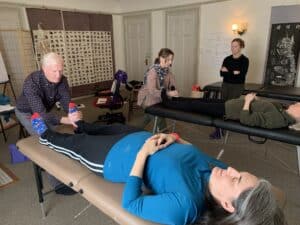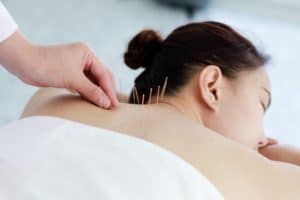The New Year: a Turning Point in Health and Wellness
In Western culture, we mark the New Year as a time for new beginnings, conscious change and renewal. It’s a time to leaving behind whatever challenges, excesses and regrets we may have had about the past year. For many, the New Year is time for a fresh start on improving health and wellness. Yet, we rarely stop to think about the natural cycles that underlie the lunar and solar calendars and the timing of the New Year. If we align our health and wellness choices with the natural cycles and seasons that subtly influence our well-being, we can move ahead with greater ease and success on our health and wellness goals.
The New Year often marks a time for changing personal health and wellness habits. We may wish to start an exercise program, or commit to a healthier diet of nutrient-dense whole foods. Health and wellness may also mean quitting something addictive, like tobacco, alcohol or sugar. Some choose a dietary detoxification and purification program to “tune-up” and jump-start health and wellness choices.
New Year can also be a time to take a new approach to chronic health concerns. When we are challenged by chronic pain or illness, we can’t achieve what we want through lifestyle changes alone. The New Year may be time to start a new program of therapy, such as Five Element acupuncture or Zero Balancing. Sometimes, we need a health and wellness professional support team to help us recover and maintain better health.
New Year and the Seasons: Lunar and Solar Cycles
The New Year is a time that draws our attention to our relationship with nature and the seasons. There are many calendars, and all of them are based on natural and cosmic cycles. The calendar we use says a lot about the values and history of the society that created it. It also influences our perception of natural cycles, which impact our health and wellness in subtle ways.
Westerners rely on the purely solar Gregorian calendar, historically European. With 365 days, it aligns well with the seasons of the year. (The extra day of “leap year” corrects for seasonal drift.) The solar calendar is useful but, unlike the lunar month, it can’t be tracked through the sky with the naked eye. As a result, Westerners tend to have little awareness of lunar phases and the subtle influence they have on the rhythms of life. Tides, fish feeding, bird migration and animal reproductive cycles are just a few of the phenomena that follow lunar phases. Nor are humans exempt from the lunar effect. Sleep, aggressive behavior, crime and fertility may all be subtly influenced by the moon, though scientific evidence is not always conclusive.
On the other hand, a purely lunar calendar has only 354 days. It does not stay aligned with the seasons of the year. The Asian calendar combines lunar and solar cycles (technically, it is lunisolar). While a month is defined by the phases of the moon, an extra month is periodically added to stay closer to the solar year. That’s why Asian New Year falls at varying times from about three to six weeks after the solar New Year. In 2020, January 25 is the first day of the Asian lunisolar New Year.
Two New Years and Five Elements
January 1, the Gregorian New Year, falls in the depth of Winter, the season of the Water Element. Winter is a time of stillness, barrenness and dormancy, when life goes underground. It is a time for extra rest, and that means we can benefit our health and wellness simply by taking time out and doing nothing.
The barrenness and stillness of Winter also means that we can see the landscape clearly in ways that would otherwise be hidden by the hustle-bustle of life. The power of Winter and the Water Element is clarity, the ability to go inside ourselves and contemplate. The time around solar New Year is a good time to introspect and really take stock of our health and wellness for the year ahead. If we see ourselves for who we really are, we can be more realistic about our plans and goals.
Asian New Year, also called Spring Festival in Chinese culture, falls closer to the beginning of Spring. This year, the New Year Spring Festival starts on January 25 and lasts until February 8, about 15 days. January 25 still feels like Winter in many climates, but if we pay close attention, we may feel the first breath of Spring and the Wood Element before Spring Festival ends. The power of Spring and the Wood Element lies in vision, planning and decision-making. As the days lengthen and energy returns to the earth, we can feel our own energy return. We can begin to actively implement our health and wellness program.
Time Out For Health and Wellness
Seen in this way, the time between January 1 and Asian New Years can become a time out between the seasons of Winter and Spring. Rather than rushing headlong into your health and wellness programs on January 2, take time to think things through, plan and gradually move toward your goals as Spring returns.
It’s notoriously difficult for people to stick with New Year health and wellness resolutions for more than a short time. Reams of advice have been written on how to make lasting change. By bringing attention to the natural cycles and seasonal influences of the Five Elements, we can learn to work with nature instead of against it. The Chinese sage, Lao Zi, famously said that the “journey of a thousand miles begins with a single step.” Aligning ourselves with the natural flow helps to keep us on the path of health and wellness.
Inner Works Acupuncture is the northwest Portland clinic of Elizabeth Zenger, Ph.D., L.Ac. Inner Works offers integrative healing therapies, with Five Element acupuncture, Zero Balancing, nutritional therapy and herbal medicine. For more information or to schedule an appointment, call 503-227-2127.




